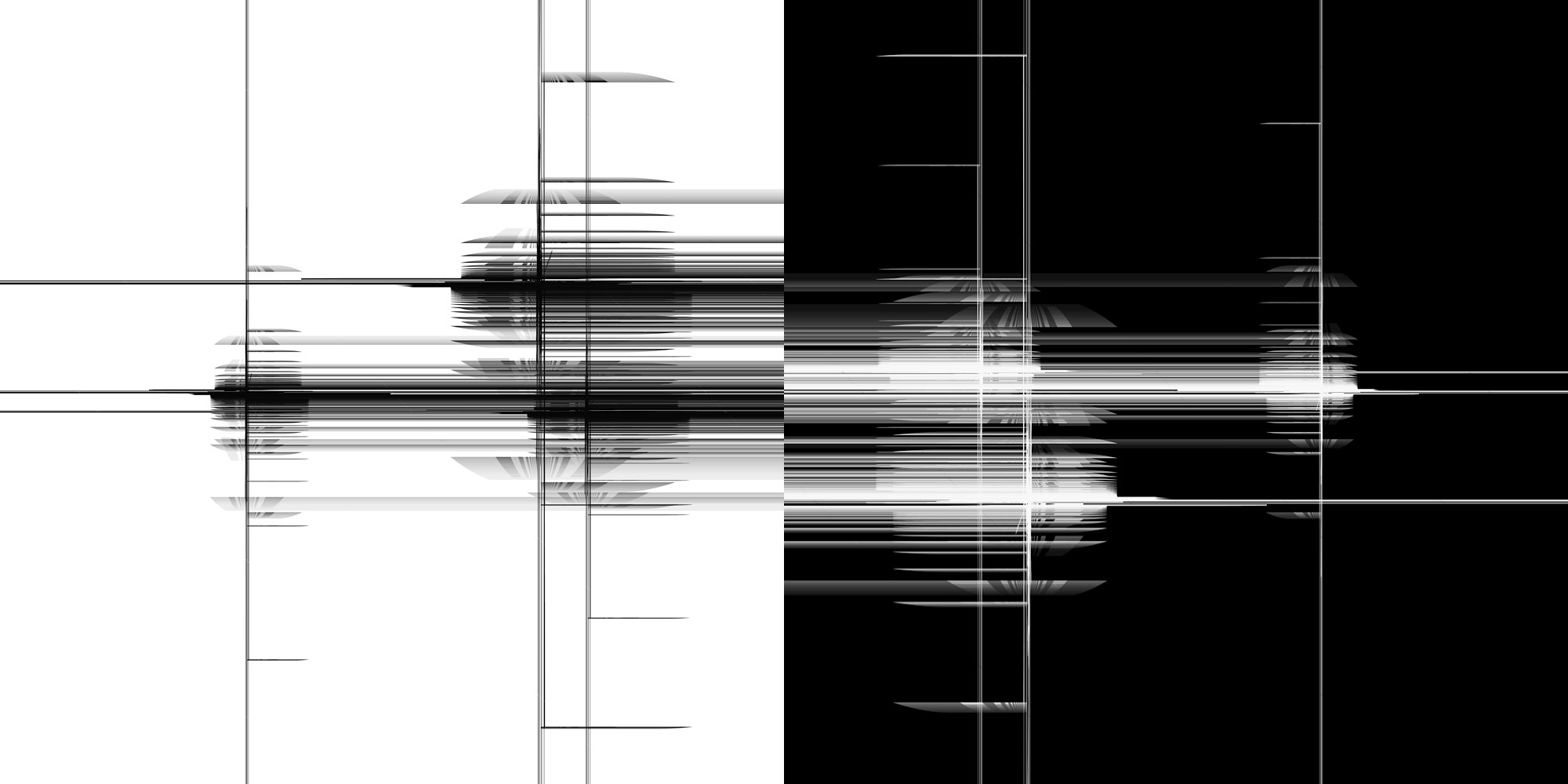[NRS] # A.Tecture
“I paint with data and create landscape paintings of the information age.” – Frederik De Wilde
What
The [NRS] project consists of computer generated images created in a customized software using complex algorithms, environmental data, real time sensor data, sound data, etc., rendered into a palpable artwork made from anodized aluminum, paint and ink. It combines state-of-the-art 2/5 printing with hand painted techniques. The results range from graphical towards painterly visual abstractions. [NRS] series are landscape paintings of the information age.
Research
The Numer1cal Recipe Series [NRS] questions the nature of data, code, information, signals, and the transcription to a physical object. [NRS] is a mapping of invisible ecologies through technological mediation. Digital landscapes, electronic shadows and subjective representations of our habitat, our lives. From this point of view [NRS] is focussing on intangible and tangible spaces whilst creating ‘bridges’ between the media arts and the traditional fine arts
Contextualisation
De Wilde’s [NRS] artworks combine a certain malfunction aesthetic -like real life- to produce true digital pixel paintings that heralds movements like Minimal Art and Abstract Art. The successive layering of lines, polygons (etc.), on the surface eventually conspires to disintegrate the ‘original’ form leaving a history of decompositions and disconnections
Frederik: ”With the Numer1cal Recipe Series [NRS] # Data i wish to emphasize the fact that we live in the most measured time (historically); a massive amount of data is presented to us as a vast laboratory to represent the human condition and to portray human subjectivity. I am interested in the merging of sublime and anti-sublime strategies to produce art and to research how a data artist can provide a mirror to society by giving data ears and eyes. The [NRS] series are landscape painting of the information age, questioning the medium of traditional painting whilst liberating and hijacking the romantic ideal in the same moment.
Art Historic Contextualisation
In England, France and Germany during the age of rapid industrialisation a new direction in art emerged, romanticism. Nature and society, the city and the countryside were at odds with each other. Over the very same period of time landscape painting was ‘discovered’ as an art form. A ‘naturalistic’ approach to landscape painting had never before played a big role in European art. Romanticism emerged from the contradiction of trying to be one with nature and feeling to be fundamentally separated from it. In romanticism wild nature symbolized the political changes of the time. Could nature give an answer to ethical questions, could there be a ‘natural’ form of government? Romantic landscape painting created nature as a window to the self, a subjectivity that is transcended by opening itself up to nature.
In media and net art survives a romanticism noir inspired by the Mary Shelley tradition of sci-fi Goth literary fiction. From there, via the noble savage of the pulp fiction Western novel, it is a short jump to cyberpunk. The aesthetic paradigm of cyberpunk fiction is circumscribed by the dystopian city; Chiba City in Gibson’s Neuromancer, or the Blade Runner City. The dystopian aspects of the cyberpunk city illustrate the failure of the technological society.
Artists reinterpret nature along the lines of the noir thread in romanticism. Networked urban culture is experienced as a second nature. The social relationships in networks become the raw material. Network scientists are looking for biological patterns in the information flows produced by networked communities. We are craving for natural explanations in the mess of the social to absolve us. New deterministic answers discovered in those networks would let us off the hook and avoid politically unpleasant questions. Can pure data be the source that stills our thirst for the natural, the divine, and the transcendent? Can we use those data flows to enter into a dialogue with nature again? Could media art rid itself of the image of the romantic hero?
Excerpts take from ‘Open Nature’ by Armin Medosh, volume 2, 2005, ISSN 1552-5112
“Like physical light (energy) and elementary particles (mass), consciousness (information) enjoys a wave/particle duality that allows it to circumvent and penetrate barriers and to resonate with other consciousnesses and with appropriate aspects of the environment. Thereby it can both acquire and insert information, both objective and subjective, from and to its resonant partners.”
Source : http://www.science-frontiers.com/sf104/sf104p14.htm
Tags
Digital Art, New Media Art, Fine Art, Generative Art, DIY Art, Media Activism, Field Recording, EMF, Data Visualization, Systems Art, Algoritmic Art, Plotter Art, Computer Art

